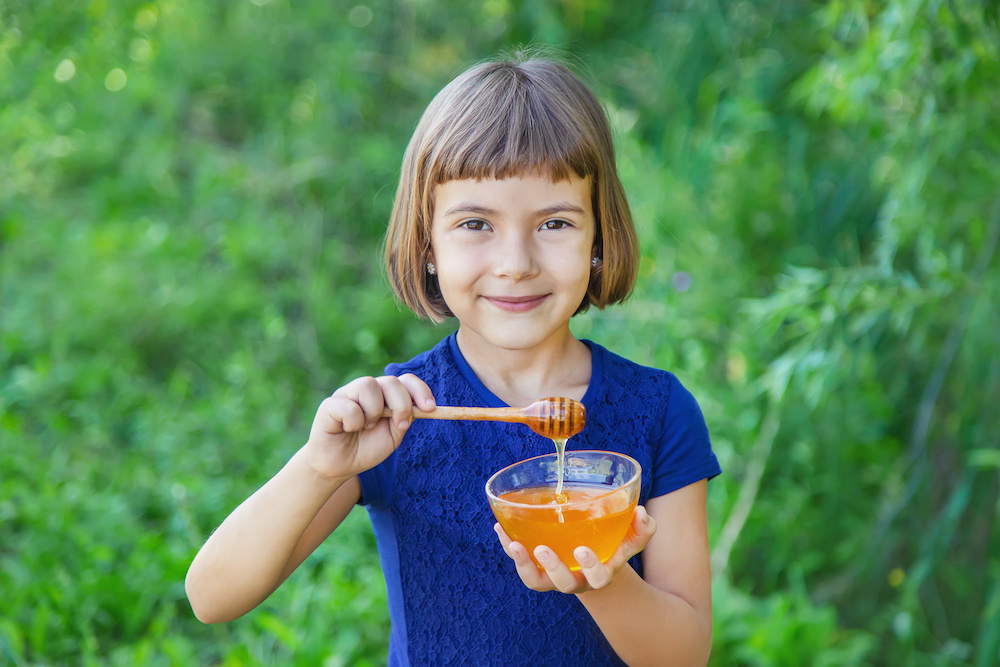Honey Bee Facts for Kids


Do you have a budding bee enthusiast in your life? Does your child just love learning about nature and in particular the honey bee? Then, we have the article for you. As bee lovers ourselves, we love when we hear about kids who are interested in learning about honey bee behavior and our ecosystem. Share these fun facts with your bee-loving kiddo!
Fun Facts About Honey Bees
They are super-pollinators.
Superman isn’t the only one with superpowers! Honey bees are one of the primary pollinators of our fruits, vegetables and flowers. A lot of the foods that you love are due in part to the pollination efforts of the honey bee. By traveling from flower to flower collecting nectar, bees transport pollen between plants helping them to grow seeds and fruits.
They live in a colony.
Groups of bees that live together form a colony. They live in a bee hive. Inside the hive, there are three types of bees: worker bees, drones and the queen. Each bee plays an important role in the hive. Without each one, the colony wouldn’t be able to run like the well-oiled machine that it is.
Workers: The female bees that are responsible for finding food and bringing it back to the hive, cleaning and protecting the hive and keeping the hive cool. When you see a honey bee, chances are that you are seeing a worker bee in action.
Drones: The male bees whose job is to mate with the queen so the hive can continue to thrive. Unfortunately, after the colony is done with them, they will be kicked out of the hive or die.
Queen: The largest female bee that is responsible for laying eggs, sometimes up to 3,000 in a day! Her scent also controls the behavior of the other bees in the hive.
They make honey.
Honey bees get their name because they produce a delicious substance called honey. The honey is meant to be their own food source during the winter months when they can’t go out to forage for food. Usually, the produce much more than they need, so we get to enjoy it on our toast and in our tea.
They know how to dance.
Honey bees communicate in a couple of different ways. One way they share information with each other is through something called a waggle dance. When scout bees have found a good source of food or water, they come back to the hive and perform their dance. The dance shows the others the exact location and distance of the food or water.
They don’t live too long.
In general, honey bees don’t live too long. Unless, of course, you are the queen. Queen bees can live up to 5 years. Drones typically die after they mate with the queen. If they don’t have the chance to mate, they will get kicked out of the hive once the cold weather kicks in. Worker bees live an average of 5-6 weeks.
They feed their queen a special diet.
All female worker bee babies have the chance to become the queen. When the current queen starts to produce fewer eggs or if she goes missing, the workers may decide that it’s time for a replacement. They will select a few worker bee larvae to continue eating a diet of royal jelly. You see, all larvae receive royal jelly for their first few days- only the future queen will continue on that diet so she can grow.
They are super-smellers.
Honey bees use their sense of smell to communicate with each other and find food. The queen releases certain pheromones to tell the workers when it’s time to forage for food, find water, cool the hive and pack up for the winter. They also use their sense of smell to find flowers. Honey bees will often try to stick to the same type of flower on their foraging trips, and their odor receptors help them do this.
Honey bees are endlessly fascinating. If you have a budding beekeeper or bee lover in your family, encourage them to continue to learn about these amazing little creatures. The conservation and protection of bees is important, too! Be sure you tell your little bee enthusiast how to protect bees.
